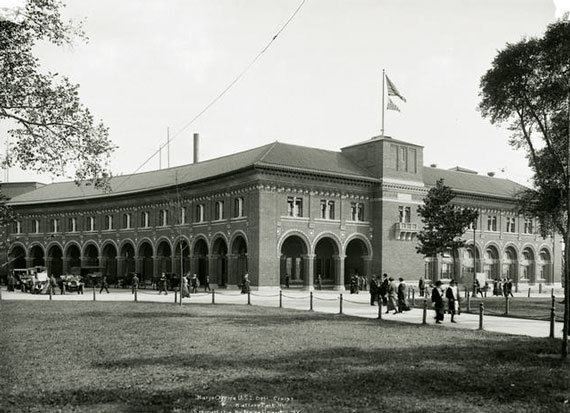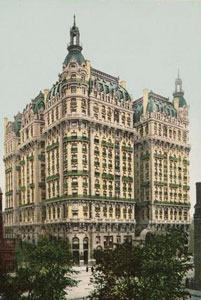Trending
This month in real estate history
This Month in Real Estate History
1923: Contractors testify about $10-a-room rentals
Three years after the passage of the Emergency Rent Laws of 1920, and amid price gouging by landlords and rampant overcrowding, builders told the State Housing Commission that livable tenements could be built for around $10 a room per month, 92 years ago this month. The laws protected tenants from capricious rent increases and unfair eviction as of Sept. 27, 1920, but did not offer relief to tenants in newly constructed buildings.
“Landlords today get what they have the nerve to ask for,” Albert Matthews, a builder, told the commission.
Matthews said when he advertised 40 five-room apartments a few years earlier, a throng of 2,000 applicants stormed the buildings. He said that many landlords who bought the low-priced houses promptly increased the rents, leading to a 14 percent gross return on the rental value, the New York Times reported.
Builder John Campbell also testified, and said that landlords were charging more than was necessary to turn a profit under the tax exemption laws. At a building he recently completed in the Bronx, rooms that could be rented at $10 each instead were raised to $20.
Realtor Victor Earle, of Earle & Calhoun, admitted that he had exploited renters’ fears in a post-World War I real estate market with 1 percent vacancy rates and little construction. Earle said he increased the rent of one vacated apartment by 20 percent, from $1,900 per year to $2,400, adding an additional $500, “just to see what I could do.” He said the new tenant was happy to pay $2,400 given the “state of mind brought about by the newspapers and by propaganda.”

U.S. Barge Office in Battery Park
1948: Underpass plans seal Barge Office’s fate
Plans related to construction of the Brooklyn-Battery Tunnel put forth 67 years ago this month revealed that the U.S. Barge Office in Battery Park would be demolished to make way for the Battery Park Underpass.
Razing the office, the New York Times noted, would leave the city without a building by that name for the first time since the Revolutionary War.
The 4,965-square-foot building housed various government bureaus. It opened in the autumn of 1913 at a cost of $500,000, on the site of the previous office of the same name, which was built in 1882.
During the Prohibition era, the Barge Office was used by Customs officials to store confiscated spirits. Immigration Services and the Coast Guard were also at the site. But by the late 1940s the red brick, Venetian-style structure was in the middle of the city’s redevelopment plans for the tip of Manhattan.
By the summer of 1950, the Barge Office was a shell of its former self: the front of it had been knocked out to make way for the underpass and it was being used primarily as storage space at Battery Park.
1971: Campaign to Save Ansonia Hotel

The Ansonia Hotel
Actors, comedians and opera singers joined a week-long rally to save the then-70-year-old Ansonia Hotel from the wrecking ball, 44 years ago this month. The performers entertained on a large platform near West 73rd Street and Broadway with the aim of getting 25,000 signatures to declare the Beaux Arts building a landmark.
The 412,000-square-foot structure, which was the first hotel with air conditioning in New York City, was known as a residence for artists, entertainers and other famed personalities, including baseball legend Babe Ruth and boxer Jack Dempsey.
The Landmarks Preservation Commission had the Ansonia under landmark consideration since April 1970, but there were objections from the landlord, who felt the building was “an economic liability,” but also wanted to “dispel all rumors that we have any intention to tear down the Ansonia Hotel.”
The hotel was ultimately saved, and was converted to condos in 1992.




